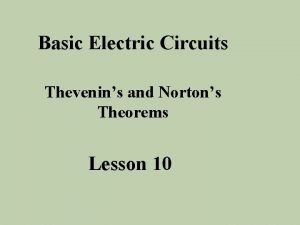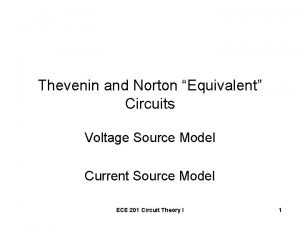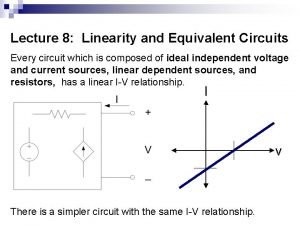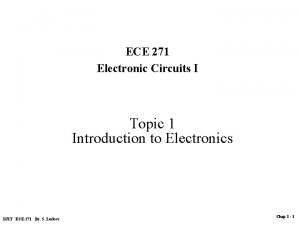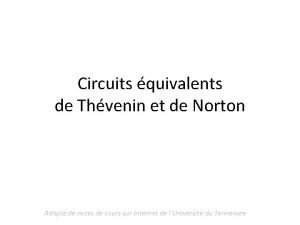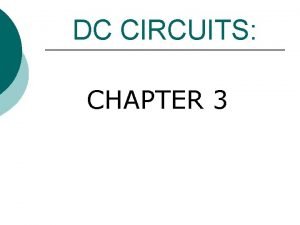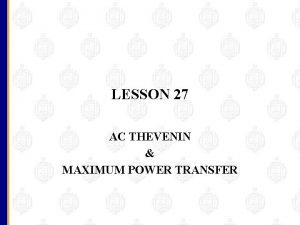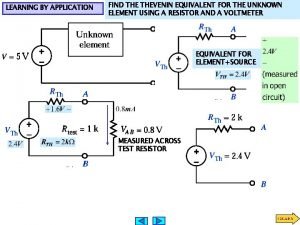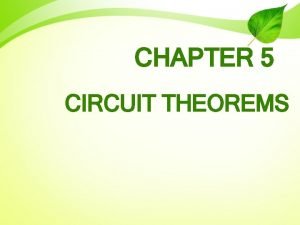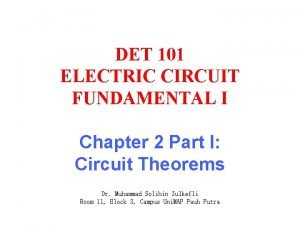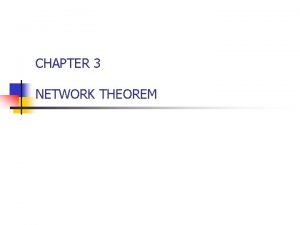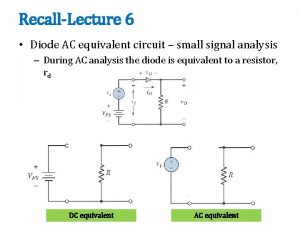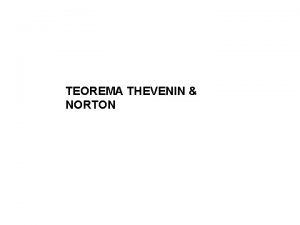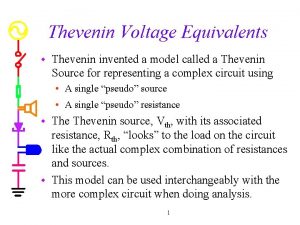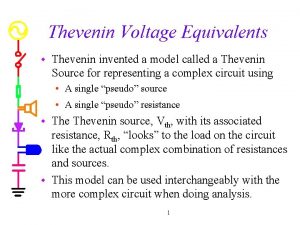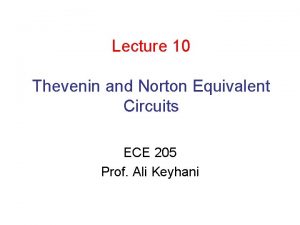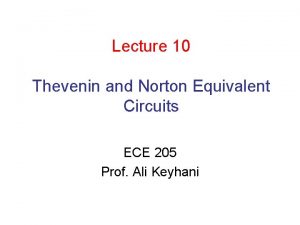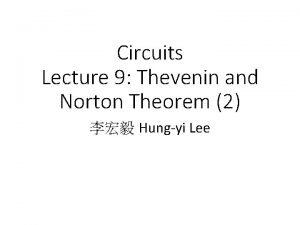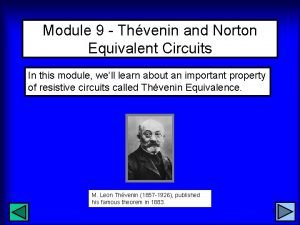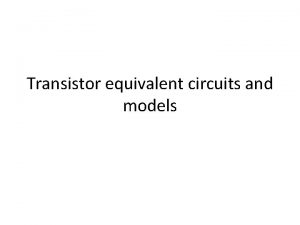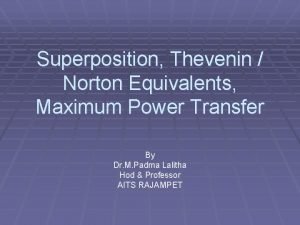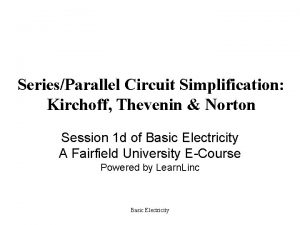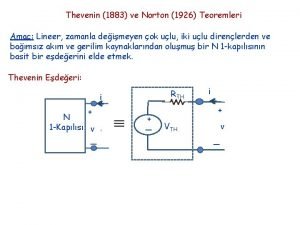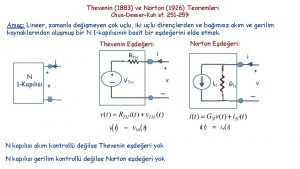Thevenin and Norton Equivalent Circuits Voltage Source Model

















- Slides: 17

Thevenin and Norton “Equivalent” Circuits Voltage Source Model Current Source Model ECE 201 Circuit Theory I 1

Why do we need them? • Circuit “simplification” Reduce the complicated circuit on the left to a voltage source in series with a resistor. ECE 201 Circuit Theory I 2

Conditions for the Thevenin Equivalent • Thevenin circuit must be “equivalent” from the terminal point of view, that is, it must provide the same voltage and current to the “load” as the original circuit. • This “equivalence” must hold for all values of load resistance. ECE 201 Circuit Theory I 3

Open-Circuit Consideration • When the load resistance on the original circuit tends towards infinity, the current goes to zero, but there is still an “opencircuit” voltage at the load terminals. • This “open-circuit” voltage must be provided by the Thevenin equivalent circuit. ECE 201 Circuit Theory I 4

Open-Circuit Conditions • There is an opencircuit voltage at the a -b terminals in the original circuit. • The open-circuit voltage is provided by the voltage source in the Thevenin equivalent circuit. ECE 201 Circuit Theory I 5

Short-Circuit Considerations • When the load resistance on the original circuit tends towards a short circuit, the circuit provides a “short-circuit” current to the load. • This “short-circuit” current must also be provided by the Thevenin equivalent circuit. ECE 201 Circuit Theory I 6

Short-Circuit Conditions • The short-circuit current that flows in the Thevenin equivalent must be identical to the current that flows in the original circuit. ECE 201 Circuit Theory I isc 7

Finding an Equivalent Circuit • Find the Thevenin equivalent circuit for ECE 201 Circuit Theory I 8

Determine the voltage at a-b ECE 201 Circuit Theory I 9

Determine the short-circuit current ECE 201 Circuit Theory I 10

The Thevenin Equivalent Circuit • By Ohm’s Law, ECE 201 Circuit Theory I 11

Summary ECE 201 Circuit Theory I 12

The Norton Equivalent Circuit • Get the Norton Equivalent Circuit from the Thevenin by Source Transformation. ECE 201 Circuit Theory I 13

Alternate Way to Determine the Thevenin Resistance If the sources are all Independent ECE 201 Circuit Theory I 14

If the Sources Are All Independent • Look into the a-b terminals with all sources set equal to 0. – Voltage Sources go to Short Circuits – Current Sources go to Open Circuits • Determine the resistance ECE 201 Circuit Theory I 15

For our Example ECE 201 Circuit Theory I 16

Looking into the a-b terminals ECE 201 Circuit Theory I 17
 Teorema thevenin dan norton
Teorema thevenin dan norton Example of norton theorem
Example of norton theorem Norton equivalent circuit
Norton equivalent circuit Thevenin and norton
Thevenin and norton Thevenin and norton
Thevenin and norton Teorema thevenin
Teorema thevenin Thevenin norton
Thevenin norton Thevenin's theorem solved problems dc circuits
Thevenin's theorem solved problems dc circuits Objective of thevenin theorem
Objective of thevenin theorem Thevenin equivalent equations
Thevenin equivalent equations Use source transformation to find the value
Use source transformation to find the value Thevenin equivalent circuit examples
Thevenin equivalent circuit examples Norton's equivalent
Norton's equivalent Line vs phase voltage
Line vs phase voltage The objectives of earthing is
The objectives of earthing is Rms current formula
Rms current formula Advantages of parallel circuit over series circuit
Advantages of parallel circuit over series circuit The ac equivalent of the diode is a resistor
The ac equivalent of the diode is a resistor

